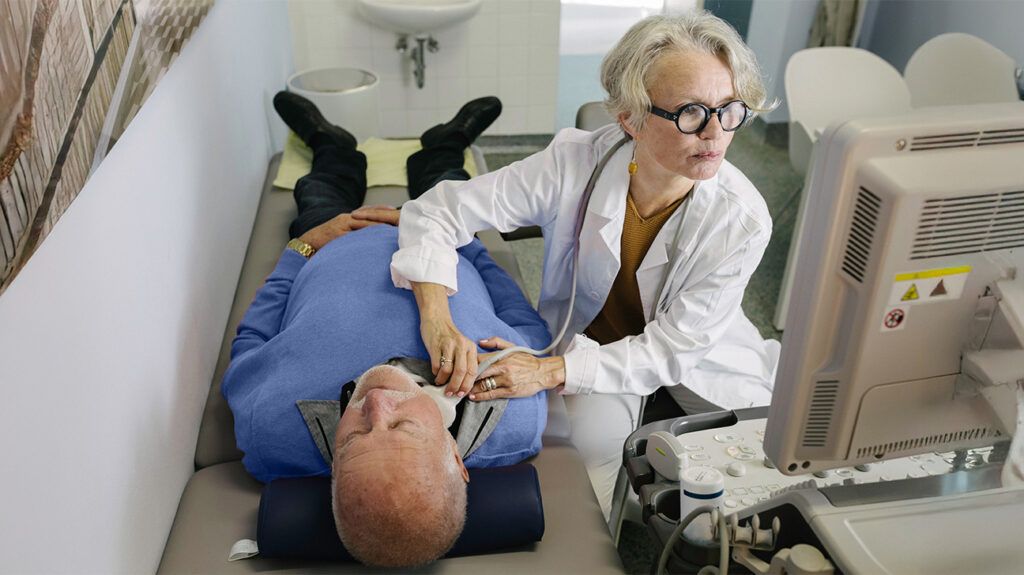Tumors and cysts are two different types of growth. People cannot always tell the difference themselves, which is why it is important to get a diagnosis from a doctor.
To determine whether a growth is a tumor or a cyst, a doctor may use ultrasound or take a biopsy, if possible.
In this article, learn about the differences between cysts and tumors. We explore the most common types and describe the conditions that cause them.

A cyst is a sac of tissue that is filled with
Cysts can feel tender to the touch, and a person may be able to move one easily. In contrast, tumors are usually firm to the touch.
Most cysts are noncancerous, although some may have an elevated risk of becoming cancerous. Tumors may be either cancerous (malignant) or noncancerous (benign) depending on the type.
Noncancerous tumors usually grow in one place and do not spread, although they can still cause problems depending on their location. Cancerous tumors develop in one area of the body, then spread to others.
Both cysts and tumors can form almost anywhere in the body, including on the bones and soft tissues. It is possible to have cysts and tumors in the same organ.
There are many types of cysts. Some examples include:
- Breast cysts: These are fluid-filled sacs that a person can easily move under the skin. A person with many small cysts may have breasts that feel lumpy. This is known as fibrocystic breast tissue, and it is common in people who have periods.
- Epidermoid cysts: These cysts develop on the top layer of skin. Some people call them sebaceous cysts.
- Pilar cysts: These form in cells at the bottom of hair follicles. The thick fluid inside the cysts often contains keratin, a hard substance that skin cells produce. Pilar cysts usually develop on the scalp.
- Ganglion cyst: These cysts form on joints or tendons, such as the joints in the fingers or wrist.
- Bartholin’s cyst: This fluid-filled cyst forms just inside the opening of the vagina.
- Hepatic cysts: Hepatic cysts grow in the liver.
- Renal cysts: These grow in the kidneys.
- Ovarian cysts: These form on the ovaries, usually around the time of ovulation. They sometimes lead to pelvic pain, back pain, and bloating.
Some types of tumor that are usually noncancerous
- Adenomas: These are made of glandular epithelial tissue, which covers the organs and glands. Examples of these tumors include colon polyps, bile duct adenomas, and hepatic adenomas.
- Lipomas: These are fat cell tumors. They are usually soft and located just under the skin.
- Fibroids: These benign tumors grow on the connective or fibrous tissues of the uterus.
Some types of cancerous tumors include:
- Carcinoma: This type of cancer and grows in the epithelial cells, which line the internal organs and skin. Examples include squamous cell carcinoma and renal cell carcinoma.
- Sarcoma: Sarcomas are a broad group of cancers that develop in the bones or soft tissues.
- Melanoma: This is a type of cancer that affects pigment-producing cells in the skin or eyes, and sometimes other locations.
- Lymphoma: This is cancer of the lymph nodes, which are part of the lymphatic system.
These are just a few examples. There are many more types of benign and malignant tumors that can grow around the body.
Benign tumors may not need any treatment, but they can if they grow large, affect other organs, or are painful.
Doctors will aim to remove all cancerous tumors unless they are impossible to reach or located so close to a vital organ that surgical removal may cause harm.
A doctor can use several diagnostic methods to distinguish between a tumor and a cyst. They will start by taking a medical history and ask about the symptoms.
The timing of symptoms is important. For example, breast cysts may become more noticeable around menstruation due to hormonal fluctuations.
A doctor will also examine the growth, if possible. They will consider its location, color, how it feels, and whether any material is draining from it.
A doctor may use an ultrasound to examine a cyst or tumor located deep within the body. Ultrasound imaging can often show whether a lump is hollow, fluid-filled, or a collection of cells.
In some cases, a doctor may request a biopsy, which involves removing the lump or cells from the lump and sending it for analysis at a laboratory. The results will determine if any further treatment is necessary.
A person should have a lump examined if they are not sure what it is.
This is especially important if the lump is growing or changing shape quickly, they have a personal history of cancer, or cancer is common in their family.
Other potentially concerning symptoms include:
- changes in the skin near the lump, such as discoloration or sores
- bleeding from area
- fatigue
- fever
- night sweats
Cysts are typically soft lumps filled with air or fluid. In contrast, tumors are masses of one type of cell.
Cysts are usually not harmful, but they may be uncomfortable or cause pain sometimes. Tumors can be cancerous, but not always.
Some cysts and tumors do not require any treatment, but some do, which is why it is important to have a doctor diagnose what the lump is.
People who have noticed any unusual, new, or growing lumps anywhere in the body should speak with a doctor as soon as they can.


